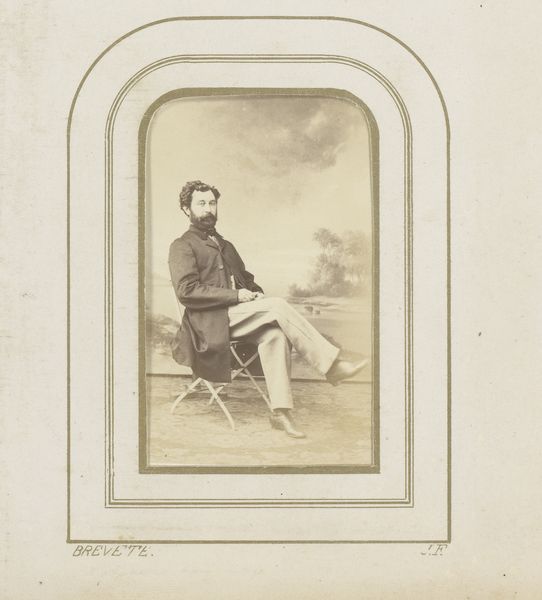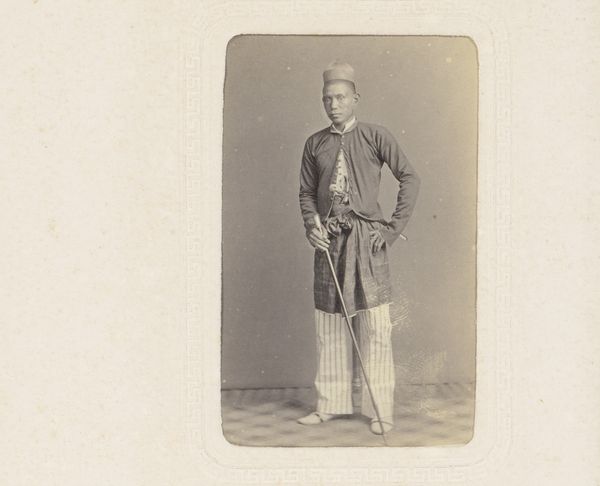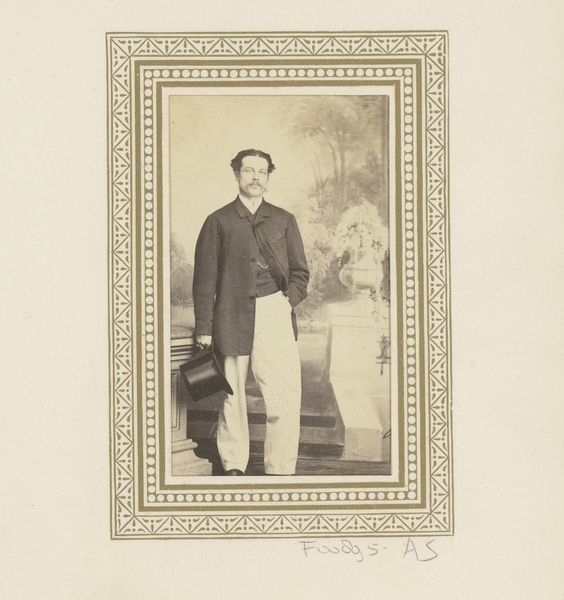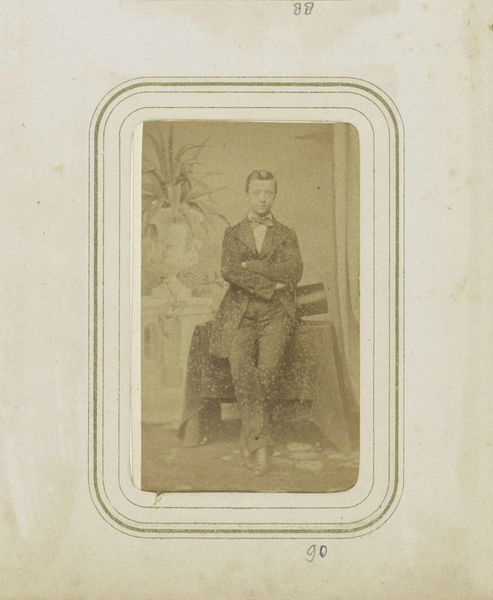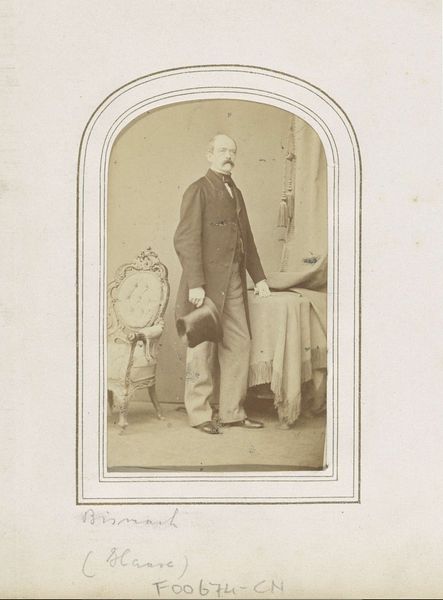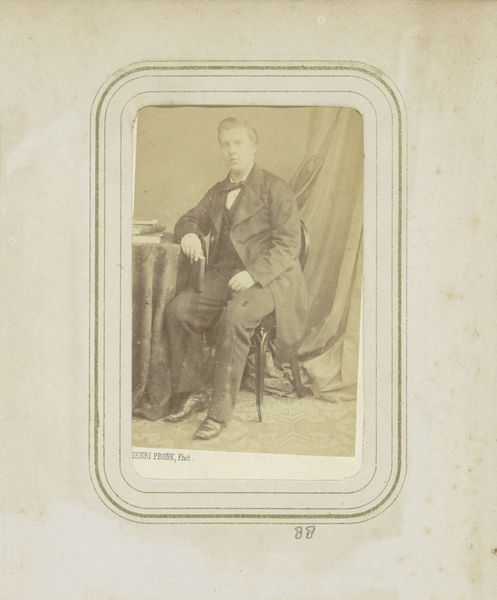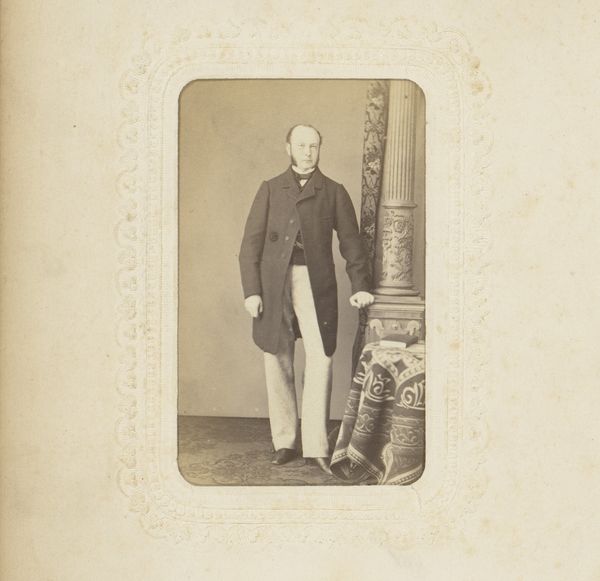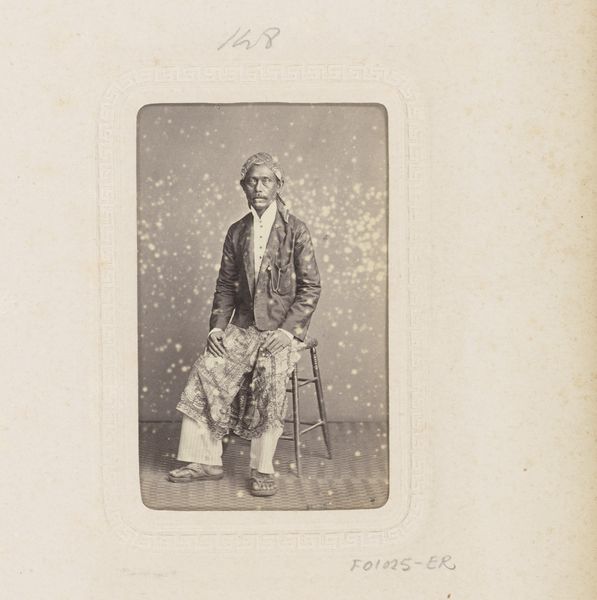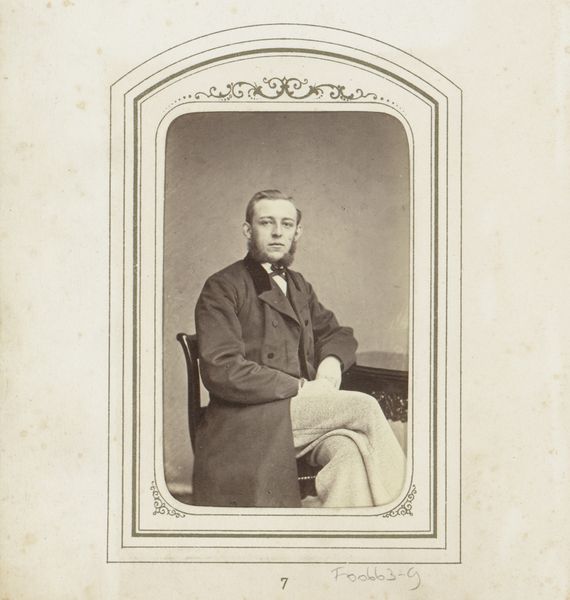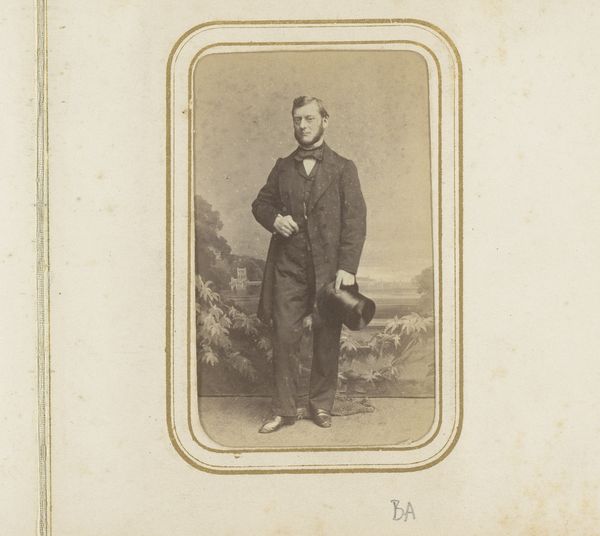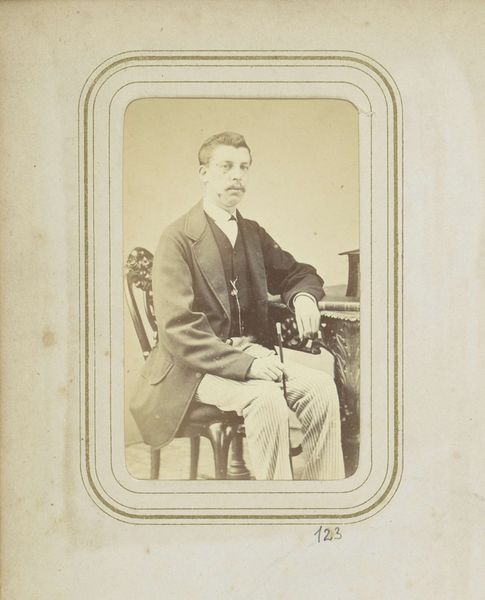
Dimensions: height 233 mm, width 284 mm
Copyright: Rijks Museum: Open Domain
Editor: So, this is Samuel Bourne’s 1870 gelatin-silver print, "Uitzicht op zee vanuit Watson's hotel in Mumbai, India"—"A View of the Sea from Watson's Hotel in Mumbai, India." The scale is remarkable. What do you see when you look at it? Curator: I see a layered representation of colonial power. This image, with its precise, almost clinical detail, captures the vast expanse of the Bombay landscape, framing Watson’s Hotel as a symbol of British presence and control. The hotel itself becomes a focal point, almost asserting dominance over the local terrain and seascape, doesn't it? Editor: It does feel imposing, a little cold even. Were photographs like this meant to be objective records? Curator: Objectivity is a myth in colonial photography. Images like these were powerful tools, used to construct a specific narrative. This photograph aestheticizes the colonial project. It shows India as a territory ready to be charted, commodified, and ultimately, ruled. The "picturesque" composition, which resembles the then fashionable style "Pictorialism," can be interpreted as an act of taming and framing India to fit European sensibilities. Look at how the native population is almost entirely absent, erased in favor of a European-centric vista. Does this reading resonate with you? Editor: Absolutely. I see that absence now – the photograph feels like a statement about who matters and who doesn't in this landscape. Curator: Exactly. And understanding that dynamic is crucial. This is why it’s essential that we recognize the implicit power structures encoded within seemingly neutral representations of landscapes and cityscapes during this period. Editor: I'm glad to view this photograph through a different lens now, and I appreciate how historical context alters my interpretation. Curator: Absolutely. It also challenges us to consider the role of the art historian, and how to re-imagine ways for people to analyze power relations inherent to these images.
Comments
No comments
Be the first to comment and join the conversation on the ultimate creative platform.
